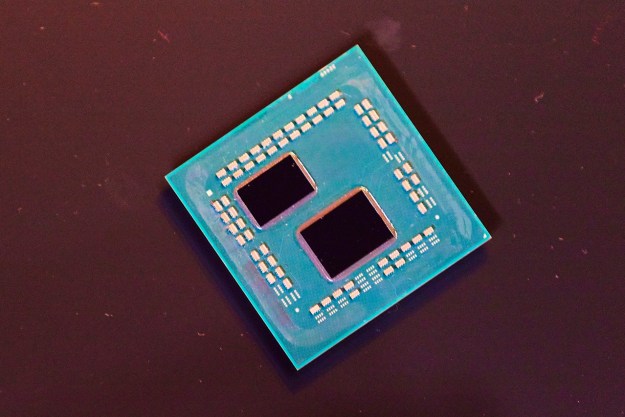
Wi-Fi networks adapt and upgrade to widely agreed-upon standards that allow devices around the world to be compatible with the same Wi-Fi networks. The current Wi-Fi standard used by most devices (more on this later) is called 802.11ac, a code you may have seen plastered over router boxes and other marketing packages. This standard allows for wireless data multi-station throughput of more than 1GB and single-link throughput of at least 500Mbps, with an RF bandwidth up to 160MHz.
The “ac” Wi-Fi standard has been in common use since 2013. However, Wi-Fi standards never stay still forever, and that means keeping on eye on upcoming standards as well. Let’s answer questions about what is Wi-Fi, what 802.11ac means and how Wi-Fi is progressing.
A bit about Wi-Fi standard development

The Wi-Fi standards process is a little counter-intuitive. The process is largely controlled by the Wi-Fi Alliance, a trade consortium that owns the Wi-Fi trademark. There is typically a lag between when a new protocol is announced and when it is fully mapped out, and in that lag a lot of manufacturers start jumping on the train as early as they can. This creates a lot of overlap and cross-compatibility issues during transfer periods, which tend to last for years.
However, Wi-Fi standards are also control by other parameters, including how fast data can move through our current cables and devices. You may have noticed that our fastest fiber-optic and high-speed internet services still tend to cap out at 1GB. We’re in a relatively stable period where most everyone is using 802.11ac, and there is still little pressure to jump forward. However, that pressure is increasing, and those designing protocols attempt to keep up with what is possible, not merely what is commonplace.
The current standard: IEEE 802.11ac
When the latest 802.11ac standard came out, it brought many upgrades compared to the previous standard (802.11n), and consigned certain Wi-Fi problems to the past. The advantages of our current standard include:
More speed: Every new Wi-Fi standard comes with a big speed boost. The “ac” standard can operate 80MHz channels or even switch to the 5GHz band and double channel width to 160MHz, which allows it to send a lot more data. With say, eight 80MHz router antennas, the standard could theoretically reach speeds of 3.47 Gbps or more, but other limitations prevent this. Updates to 802.11ac have made it faster over the years as well.
Less interference: 802.11n (and all earlier Wi-Fi standards) operate in the unlicensed 2.4GHz frequency band, which is famously shared by everything from cordless phones to Bluetooth devices to baby monitors to microwave ovens. 802.11ac is backwards compatible and can easily utilize the 2.4GHz band: Since this band is easy to format for, it still remains the go-to option for most at-home wireless networks.
However, 802.11ac can also access the 5GHz band. At this frequency, range is decreased but it’s easy to fit more information in the signal, so speeds can increase. Most beneficially, there’s a lot less interference up at 5GHz. When you see a router that is “dual-band” that means it can operate at 5GHz, and smart routers can often automatically switch devices to a different band if it looks like the default band is getting crowded.
Improved stream management: 802.11ac introduced a few neat tricks to Wi-Fi, too. First, it allowed for beam targeting, or the ability of routers to track the location of specific devices and strengthen the signal aimed at those devices. This helps to reduce or get rid of dead zones and improve performance at the outer edges of reception. The standard allows for MU-MIMO (multi-user, multi-input, multi-output) connections, a still-evolving protocol that allows routers to establish independent links with up to four compatible devices to improve speeds and cut down on lag problems.
Does faster Wi-Fi mean faster internet?

This is a common question among those considering an upgrade. The simple answer is, “It can.” But internet speed depends on so many factors it’s difficult to say yes or no. Let’s make it a little easier. If you want the fastest Wi-Fi speeds possible, then you should do the following.
1. Check your internet service: Do you have high-speed, fiber-based internet that allows for speeds up to 1Gbps? Most services still can’t realize full gigabit speeds, but they can get closer with the right packages.
2. Check your router: If you haven’t changed your router in years, it may not be compatible with the “ac” standard. If that’s the case, it’s time to upgrade your router to a version that offers better speeds. Router placement is also important!
3. Check your wireless devices: They, too, are rated for different Wi-Fi standards. This is less of a problem, because we tend to switch out smartphones and tablets more frequently than routers or internet service packages. But if you haven’t changed a device in years, it may be worth checking the specifications. For more, check out our tips on how to increase internet speed.
The future of Wi-Fi: IEEE 802.11ad and ax

Two important new Wi-Fi standards are on their way. One is called called 802.11ad. Remember when we talked about how important it was that the 802.11ac could access the 5GHz band? Well, 802.11ad can access the 60GHz band (here’s one router that already has it).
That’s an incredibly high frequency, which means that its range is pretty short — we’re talking about just a small room here — and it’s really, really fast. 802.11ad could provide basic speeds up to 7Gbps without breaking a sweat, and could easily go far higher under the right circumstances. Some have started calling this super short, super powerful signal Wi-Gig.
Right now, we’re not sure how 802.11ad will be used. Many predict that it will be used to replaced certain hard-wired parts of the internet infrastructure that would be easier to manage in a wireless form. Others are predicting that phones will start including 802.11ad compatibility in the near future. However, it’s still uncertain when or how “ad” will make it into our home networks.
The second standard to watch for is 802.11ax, which focuses on extra features like more advanced MU-MIMO, better battery life management, Bluetooth 5.0, and similar technology. It doesn’t have the huge bump in speed that 802.11ad has, but it does offer significantly higher speeds than 802.11ac, and it is particularly friendly to smart devices and home management. Look for the “ax” standard to show up on router in the next couple of years.
Editors' Recommendations
- What is Wi-Fi 7: Everything you need to know about 802.11be
- Best 802.11ac (Wi-Fi 5) wireless routers





